7 Types of Mosquitos in Florida (With Pictures)
-
Rachel Giordano
- Last updated:
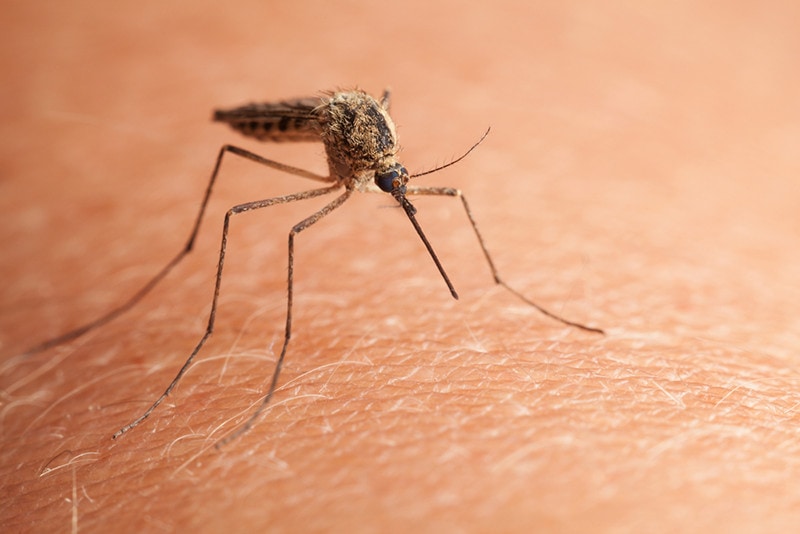
Anyone who lives or has visited the state of Florida knows the state is home to many mosquitos. Florida’s warm and tropical climate is the perfect breeding ground for these nuisance insects in the spring and throughout the summer months, and there are approximately 80 species1, with five species being the ones that love to feed on humans1.
Given that there are so many, we will focus on seven of them that can potentially cause health problems1 to both humans and animals, so bust out your bug spray and let’s get started.
The 7 Types of Mosquitos in Florida
1. Aedes aegypti
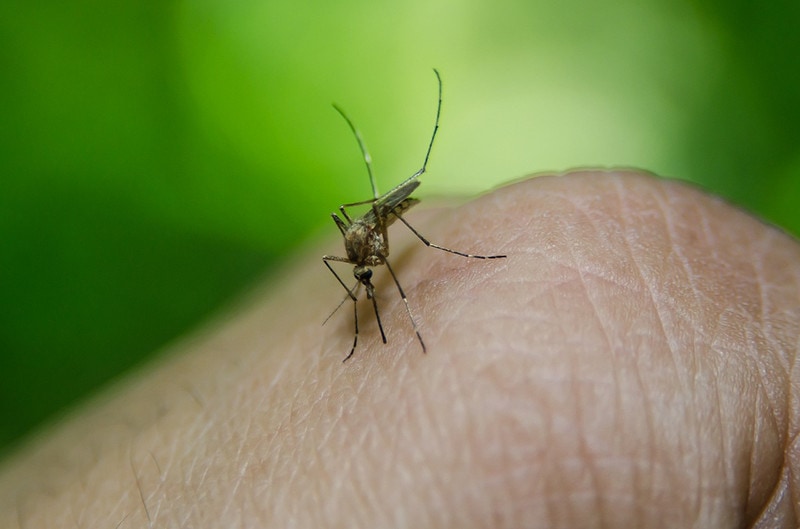
Commonly known as the yellow fever mosquito, the larvae of this invasive species1 are found around Florida homes and backyards that have water-holding objects, such as flowerpots, bottles, conch shells, or anything else that holds water.
These are the main mosquitos that can transmit the Zika1 virus, dengue, chikungunya, and yellow fever. Some people may have more of a reaction to a bite, such as fever, headaches, a rash, joint pain, or muscle pain. However, it is rare that someone gets extremely sick, and most times, no symptoms arise. They are found all throughout Florida except for the Panhandle.
2. Aedes albopictus

This species, also known as the Asian tiger mosquito, is found in all of Florida. Similar to the Aedes aegypti, they love water-filled objects and can spread the same viruses. Both the Aedes aegypti and Aedes albopictus have white stripes on the legs and back and are small and black in color. Interestingly, both species bite during the day, and most mosquitos are vampires at night.
3. Aedes taeniorhynchus

Commonly known as the Black Salt Marsh1 mosquito, these little guys are particularly active during summer and early fall. The larvae are found in salt marshes and are a vector1 of heartworm1. These mosquitos are common in the eastern coastal counties, with Florida being a favorite. It prefers mammals to feed on, and they are considered a pest mosquito that feeds at dusk and dawn. They have white bands on the abdomen and use winds to carry them to their next meal. They lay eggs on moist soil and hatch with heavy rainfall.
4. Culex quinquefasciatus
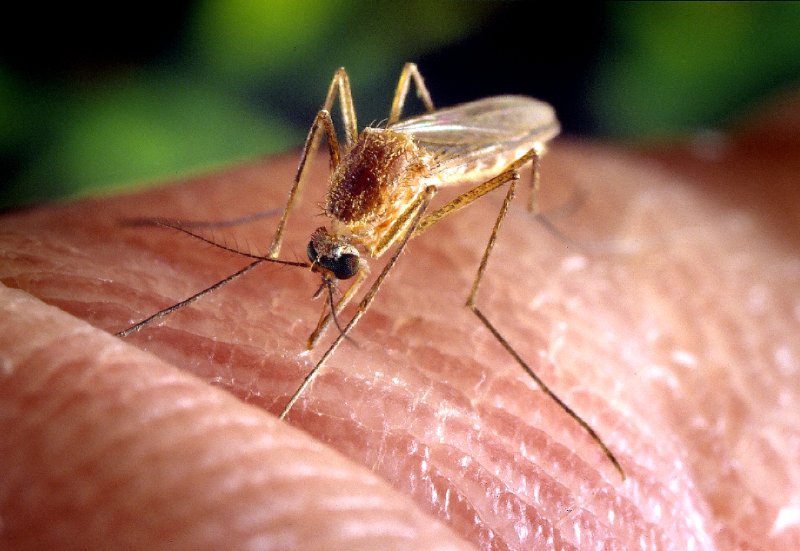
Also known as the Southern house mosquito, this species is brown in color and is active at nighttime. These little buggers have the ability to transmit the West Nile virus1, but the good news is that most people infected with the West Nile virus do not feel sick. They lay their eggs in water and feed on mammals.
5. Psorophora ciliata
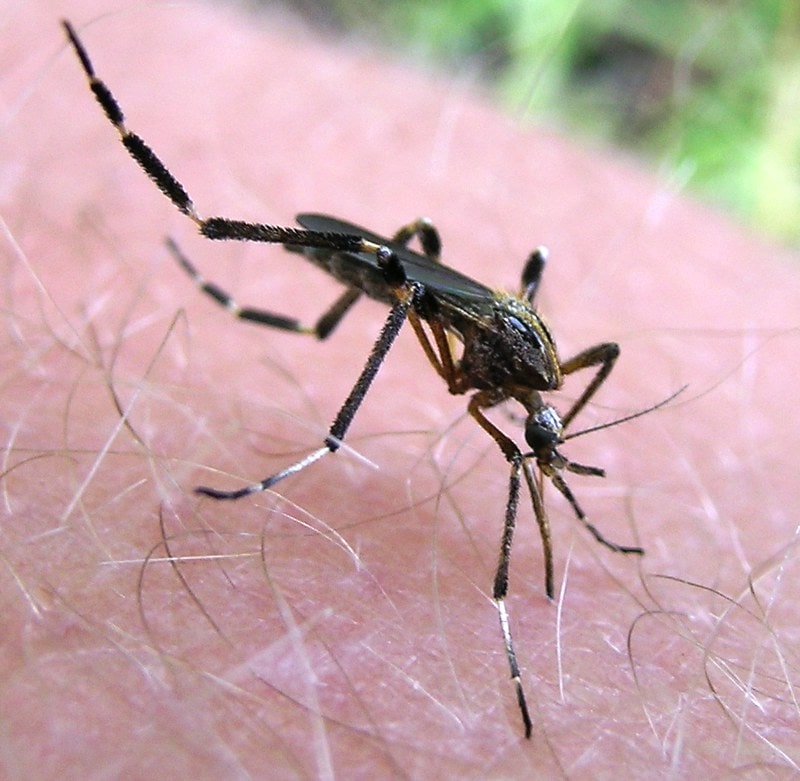
This mosquito is one of the largest1 in the United States, and they are aggressive biters. It also goes by the name of the Shaggy Legged Gallinipper1, a vernacular term that refers to a large insect with a powerful sting or bite. They are more abundant during wet summers, making Florida a perfect home. You’ll find them in grassy pools, pastures, ditches, containers, and citrus groves. While they have a powerful sting, they do not transmit mosquito-borne pathogens1.
6. Anopheles

There are eight different species of Anopheles that can potentially transmit malaria1. They are as follows:
- Guadrimaculatus: Found in every county. More abundant in northern ad western Florida. Thrive in lakes and red clay regions
- Crucians: Found in acid ponds and cypress swamps
- Perplexens: Rare but can be found in north central Florida
- Punctipennis: Found in northern and western Florida. Larvae habitat is during winter in slow-flowing alkaline systems
- An Atropos: Found in salt marshes
- Barberi: Found in tree holes
- Albimanus: Very rare. Found in pools in the Florida Keys. Major vector in Central America
- Walker: Found in heavily vegetative lakes. More common in central Florida
7. Culex nigripalpus
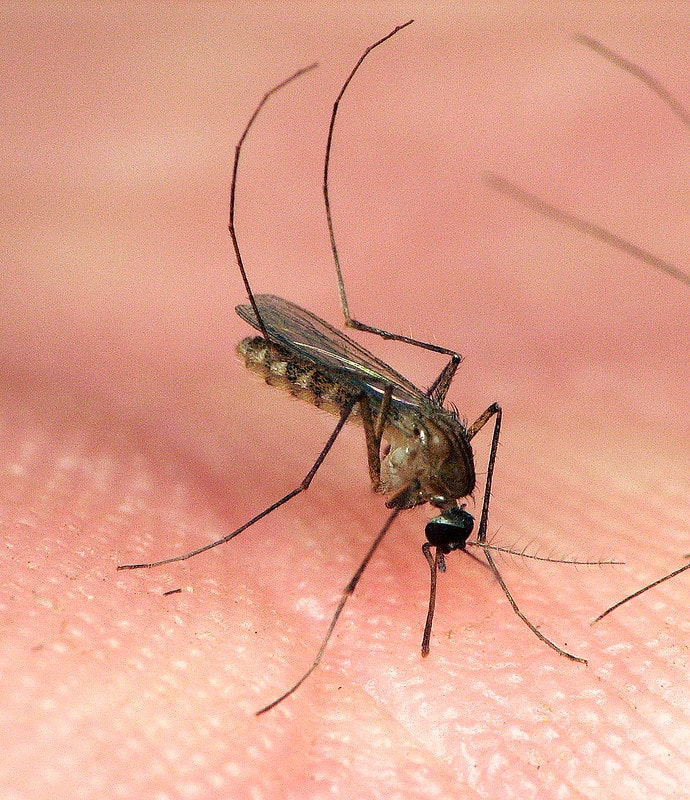
This medium-sized1 mosquito hangs out in dense vegetation during the daytime. The larvae habitat is mainly flooded grassy pastures and croplands. The population peaks from mid-July to October, with adults living throughout the year. This species is a vector of heartworm.
Tips for Protecting Yourself Against Mosquitos
You can take certain measures to protect yourself and your property by making your property less desirable1 for these little buggers. For starters, mosquitos love water and use it to lay their eggs. It’s best to drain any standing water in and around your home, such as a kiddie pool, buckets, or any other object that holds water.
Wear long sleeves and pants to protect your skin when outdoors, especially at dusk or dawn. Mosquito repellents also work well to deter them from biting you. Repellents come in handy if it’s too hot outside to wear long pants and long sleeves. Lastly, ensure your windows have screens to keep mosquitos from entering your home.
Keep your gutters and downspouts free from clogging and remove any collecting debris. Remove empty cans or jars from the yard, and regularly inspect your property for any standing water.
Conclusion
Mosquitos are a nuisance that will never go away, but that doesn’t mean you have to suffer. While the mosquitos on our list could transmit viruses, such as West Nile, Zika, dengue, and chikungunya, most people have little to no symptoms. As for yellow fever, mosquitos can bite an infected person and transmit it to a human; however, this is common outside the United States and not found in Florida. However, for our four-legged friends, it’s of utmost importance to protect them with heartworm prevention medication.
- https://www.fdacs.gov/Business-Services/Mosquito-Control/Mosquitoes-General-Information
- https://www.floridahealth.gov/diseases-and-conditions/mosquito-borne-diseases/index.html
- https://www.floridahealth.gov/diseases-and-conditions/mosquito-borne-diseases/_documents/fl-resident-guide-to-mosquito-control-ifas.pdf
- https://www.cdc.gov/zika/index.html
- https://edis.ifas.ufl.edu/publication/IN1035
- https://vcahospitals.com/know-your-pet/heartworm-disease-in-dogs
- https://www.coj.net/departments/neighborhoods/mosquito-control/aedes-taeniorhynchus.aspx
- https://www.kellerspestcontrol.com/mosquitoes
- https://www.cdc.gov/westnile/index.html
- https://entnemdept.ufl.edu/creatures/AQUATIC/Ps_ciliata.htm
- https://uwm.edu/field-station/psorophora-ciliata-aka-the-shaggy-legged-gallinipper/
- https://www.cdc.gov/niosh/topics/outdoor/mosquito-borne/default.html#:~:text=Diseases%20that%20are%20spread%20to,virus%2C%20dengue%2C%20and%20malaria.
- https://www.abchomeandcommercial.com/blog/types-of-mosquitoes-in-florida/
- https://www.vocabulary.com/dictionary/vector
- https://bugguide.net/node/view/59375
- https://www.orkin.com/locations/florida-fl/mosquitoes
- https://ufhealth.org/yellow-fever
Featured Image Credit: Anest, Shutterstock
Contents

